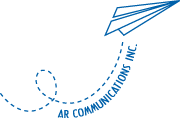Content Marketing – Benchmarks, Budgets, and Trends for 2012
Content marketing is gaining an increasingly important role for B2B marketers, and in companies’ overall marketing strategies . Below you will find a link to the 2012 Benchmarks, Budgets & Trends survey put together by the Content Marketing Institute and MarketingProfs.
For purposes of the research, the survey defined content marketing as follows: “Content marketing/custom media (sometimes called custom publishing, custom content, or branded content) is the creation and distribution of educational and/or compelling content in multiple formats to attract and/or retain customers.”
Here are some highlights:
• On average, B2B marketers employ eight different content marketing tactics to achieve their marketing goals.
• 60% report that they plan to increase their spend on content marketing over the next 12 months.
• Marketers, on average, spend over a quarter of their marketing budget on content marketing.
Industries with the highest rates of content marketing adoption:
• Professional Services………………………………..94%
• Computing/Software…………………………………93%
• Advertising/Marketing………………………………89%
• Healthcare……………………………………………………….89%
• Business Services……………………………………….84%
• Manufacturing/Processing…………………….83%
For a free copy if the report – Click Here
How is your company leveraging content marketing? What results are you experiencing? Leave a comment below or email me at michael at ar-com.com

